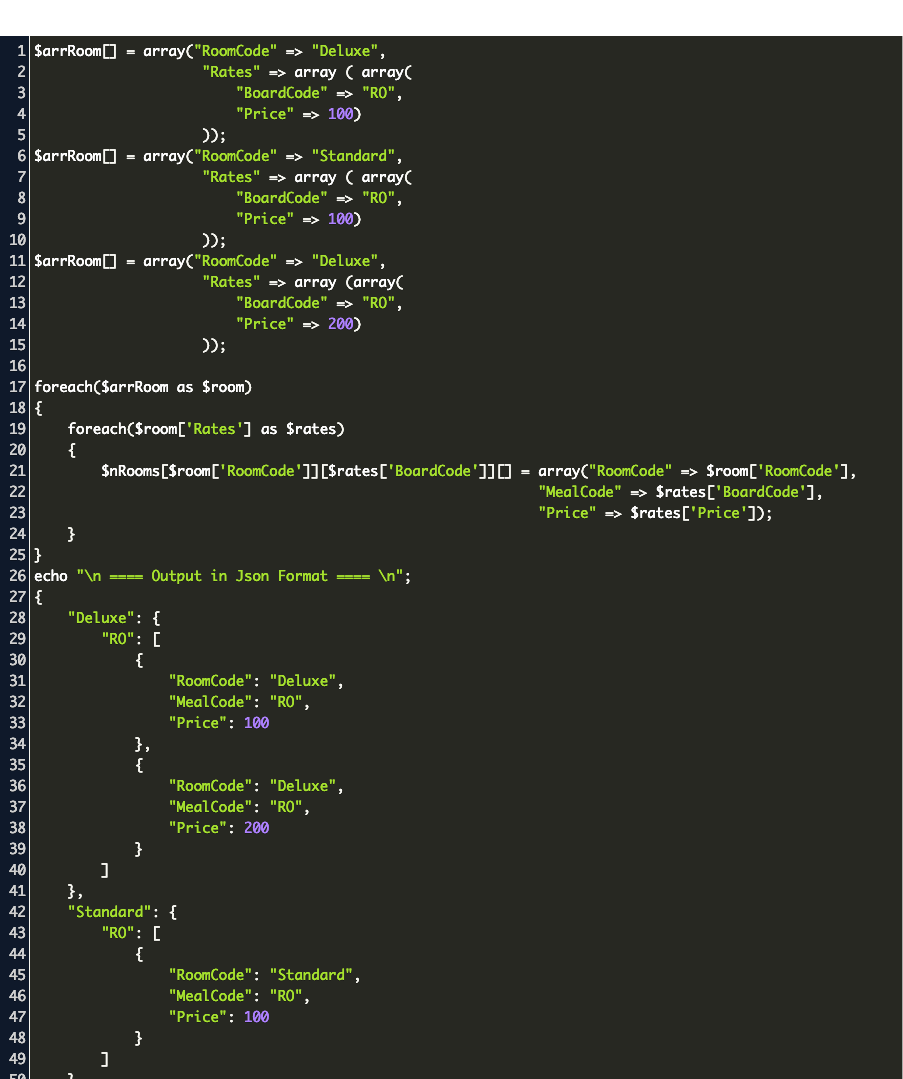

But what if you need to use the data in an array?

Before concrete5.6.2 the JSON helper could only convert a JSON string into an object. inarray Checks if a value exists in an array. extract Import variables into the current symbol table from an array. end Set the internal pointer of an array to its last element. Let's write a class called JsonCollectionStreamWriter that will help us with this.įirst, we need to open a file we're going to write to.In current versions of concrete5, the JSON helper can be used to convert JSON to an object or to an array. each Return the current key and value pair from an array and advance the array cursor. What we want to be able to do is add items to the opened collection and close the collection when done. Lets start with writing a JSON collection to a file using streams. To handle such large files in a memory-efficient way, we need to work with smaller chunks at a time. This example decodes JSON data into a PHP object. For our case, a JSON collection is a string containing a JSON array of objects (A LOT OF THEM), stored in a file. Let's start with writing a JSON collection to a file using streams. The jsondecode() function is used to decode a JSON object into a PHP object or an associative array. For converting JSON to array in PHP we use JSON decode jsondecode () function.

From the above words, you all know about what is an array and JSON and how we declare JSON and array in PHP. For now, we'll focus on storing those large collections of data in a JSON file and reading from it.įor our case, a JSON collection is a string containing a JSON array of objects (A LOT OF THEM), stored in a file. Now we check how we Convert JSON string to Array with example. I'll write in detail about the whole import process in another post. Here is how it looks like: mixed jsondecode ( string json, bool assoc FALSE ) But, note that since the assoc parameter is set to FALSE, it is necessary to set it to TRUE for retrieving an array. It is aimed at converting the returned objects to associative arrays. Since the uploaded CSV is expected to have tens or even hundreds of thousands of rows, all of the operations need to be done in a memory-efficient way, otherwise, the app would break from running out of memory. In the jsondecode function, there is a parameter known as assoc. If everything was fine, the mapped data from the first JSON file is converted into database records, which in this case span several connected tables.There can be A LOT of validation errors for large CSV files. The jsondecode () function returns an object by default. Validation errors are saved to different JSON file so they can be fetched later from the frontend without additional processing by the application. The jsondecode () function is used to decode a JSON object into a PHP object or an associative array. If there are any validation errors, we don't want to save anything to the database, we want to present all of the errors for each row. Finally, if there are no validation errors the data is read from the JSON file again and saved to the database. The built-in function jsondecode () has four parameters. The correct syntax to use this function is as follows. You can use this script to test the speed of both methods. Cast the value to an array, then check (using ) if it is identical to the original. On my machine, this method takes about 1/4 the time of using isarray (). We will convert the JSON string to an object or an array to extract the data. If you use isarray () millions of times, you will notice a huge difference.

We will use the built-in function jsondecode () to extract data from JSON. foreach merely presents the elements of an array in the order that they are stored within the array. This behavior is a result of the way that PHP arrays are stored. In the second step the JSON file is read and each item from the collection is validated against the defined rules. Use jsondecode () Function to Extract Data From JSON in PHP. For example, if you need to have the elements presented in ascending order by key, use the ksort function to rearrange the elements of the array in key sequence.They are meant for executing certain statements repeatedly, till the required result shows up. This allows us to not worry about parsing the data again in the following steps. Using PHP arrays, we often have to use loops. First, the CSV file is read, columns are mapped, and saved to a JSON file.The import then goes through several stages: The user selects a CSV file, maps columns to supported fields so the app can tell what is what, and submits it. Using PHP streams to encode and decode large JSON collectionsĪ while ago, I was working on a way to import large datasets in a hobby project of mine Biologer.


 0 kommentar(er)
0 kommentar(er)
